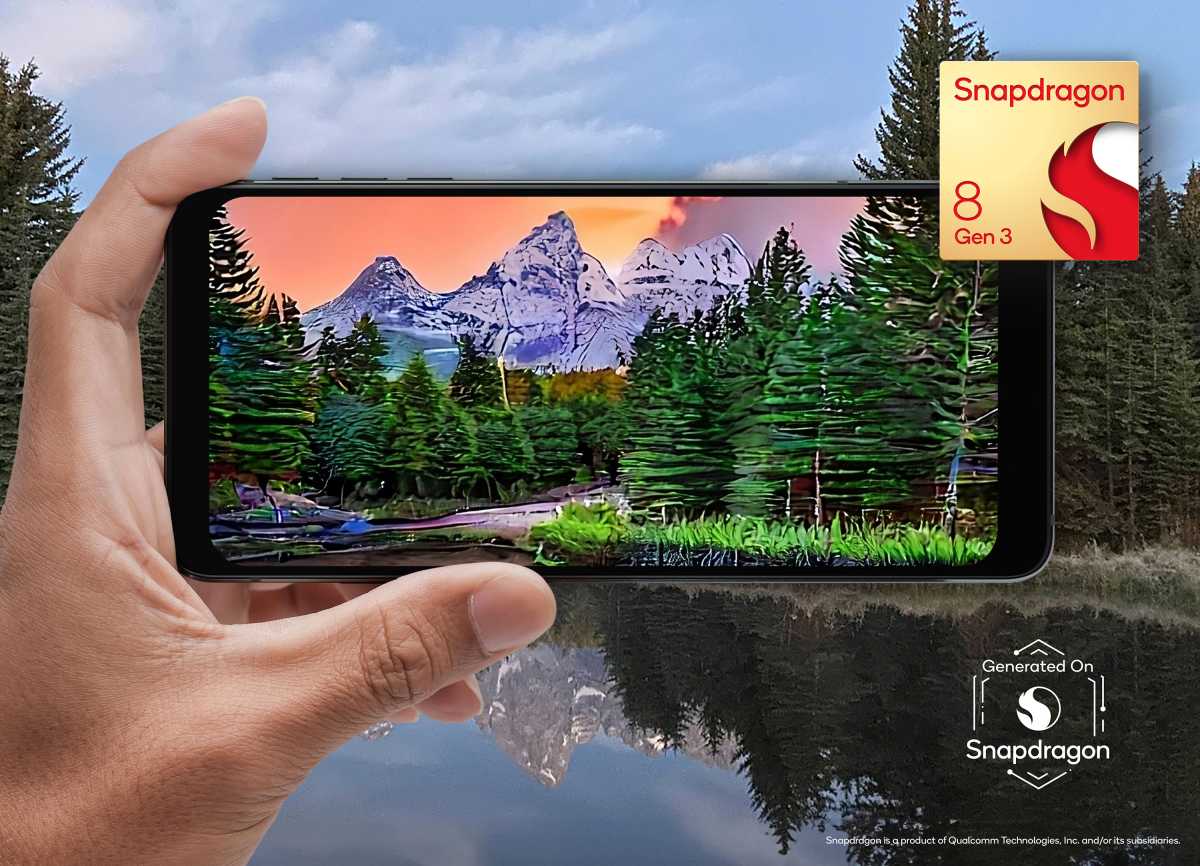Qualcomm’s Snapdragon series has long been regarded as a model of cutting-edge technology and creativity. The Snapdragon 8 Gen 3 is the latest member to the Snapdragon family, and it promises to drive smartphones even farther forward.
What does the 8 Gen 3 have to offer, and when can we expect to see it in future smartphones? Here’s all we know about the Qualcomm Snapdragon 8 Generation 3.
When will the first Snapdragon 8 Gen 3 phones launch?
On October 24, Qualcomm revealed the 8 Gen 3 at their Snapdragon Summit. Normally, you wouldn’t anticipate phones to be released right away, but Xiaomi has stated via Weibo that its 14 series will be introduced on October 26. The Xiaomi 14 will almost certainly be the first phone to be introduced using the Snapdragon 8 Gen 3 processor.
What are the Snapdragon 8 Gen 3 specs and features?
Let’s break the Snapdragon 8 Gen 3 down into a few of its core parts to talk about what’s new.
Kryo CPU & Adreno GPU
The Snapdragon 8 Gen 3 employs 4nm process technology, rather than the 3nm rumored for the A17 Pro. Nonetheless, Qualcomm’s new processor outperforms the competition thanks to its Kryo CPU and Adreno GPU.
The Qualcomm Kryo CPU has one Prime core that can achieve speeds of up to 3.3 GHz and is designed on a 64-bit architecture. It is based on Arm Cortex-X4 technology and has five ‘Performance’ cores (up to 3.2 GHz) and two ‘Efficiency’ cores (up to 2.3 GHz). The new chip outperforms the Gen 2 by 30% in terms of performance and 20% in terms of power efficiency.
The Adreno GPU is 25% faster, 25% more power efficient, and 40% better at Ray Tracing. These performance improvements also result in a 10% total power reduction.
The 8 Gen 3 supports up to 4K at 60Hz and QHD+ at 144Hz on-device display resolutions. It can also support external monitors with resolutions as high as 8K at 30Hz and 1080p at 240Hz, providing a diverse display experience.

To increase mobile gaming performance, the processor has Snapdragon Game Super Resolution, which enables game scenes to be upscaled to 8K on external monitors. The Adreno Frame Motion Engine 2.0 also provides greater quality scenes with doubled frame rates while consuming the same amount of power.
Cameras
Not only gamers, but also photography enthusiasts will appreciate the Snapdragon 8 Gen 3’s capabilities.

The Spectra Image Signal Processor can process photos and videos in real time using Semantic Segmentation (up to 12 layers). It is compatible with high-resolution cameras, including 108-megapixel and 200-megapixel single cameras. This chipset also excels in HDR video capture, capturing 8K HDR footage at 30 frames per second and 4K video at 120 frames per second.
It promises much improved picture and video editing experiences, as well as voice-activated generative AI. Semantic Segmentation technology will enable real-time optimization of many components of your images, offering additional detail, vibrancy, and authenticity. Even in low-light situations, AI-powered Night Vision video recording should make a significant impact.
The chipset also includes Truepic photo capture with C2PA standard and Arcsoft’s Video Object Eraser for video capture, which allows you to delete undesired objects from your recordings with a single tap.
For creators, the Vlogger’s View feature lets you broadcast both your selfie camera and back camera footage at the same time. Photo Expansion can also assist you in naturally stretching photographs beyond their initial frame.
AI capabilities
The Snapdragon 8 Gen 3 also showcases Qualcomm’s commitment to on-device generative AI.

Its AI Engine enables multi-modal generative AI models such as large language models (LLM), language vision models (LVM), and transformer network-based automated speech recognition (ASR) with up to 10 billion parameters, all of which operate on the device.
One of the most notable aspects is the capacity to make graphics fast. LLM models can also improve the responsiveness of your personal AI helper. Furthermore, the Snapdragon 8 Gen 3 supports on-device customisation via the Qualcomm Sensing Hub.
The processor offers up to 98% quicker Qualcomm Hexagon NPU performance and a 40% increase in performance/watt. Furthermore, the Qualcomm Sensing Hub improves AI performance by up to 3.5x.
Audio quality
Audio quality is another aspect where Qualcomm has made progress with the Snapdragon 8 Gen 3.
The Aqstic audio codec includes features like spatial audio with head-tracking, promising an immersive audio experience.
Snapdragon Sound with Qualcomm Expanded Personal Area Network Technology (XPAN) also offers lossless audio while traveling or keeping connected to your phone. Another wonderful detail is the synchronization of gaming sound to the millisecond, which provides zero latency from onscreen activity to your headphones.
Connectivity
The Snapdragon 8 Gen 3 also has better connection.
It is outfitted with the Snapdragon X75 5G Modem-RF System, which supports 5G Advanced. It supports 5G mmWave and sub-6 GHz frequencies, as well as 5G standalone (SA) and non-standalone (NSA) modes, standalone mmWave, and mmWave-sub-6 dual connection. It also has downlink speeds up to 10Gbps and uplink speeds up to 3.5Gbps.
Wi-Fi 7 is also available on the Qualcomm FastConnect 7800, with peak rates of 5.8Gbps. Bluetooth also has support for aptX Voice, aptX Lossless, aptX Adaptive, and LE Audio.
Its 5G modem, which includes an AI tensor hardware accelerator, provides 2.5x the AI processing capability of its predecessor. It also supports lossless 24-bit 96 kHz music via Bluetooth wireless technology.

Which phones will use the Snapdragon 8 Gen 3?
Qualcomm did not reveal any new phones with the Gen 3 processor, but based on past experience, we can make a few solid predictions.
The Vivo X90 Pro+, Xiaomi 13 and Xiaomi 13 Pro, and OnePlus 11 were among the first devices to employ Gen 2. We’re quite sure that companies will be rushing to get the new silicon into their flagships for 2024.
We fully anticipate the Snapdragon 8 Gen 3 to appear in a slew of additional flagships, including those from Samsung, Motorola, and Oppo.


